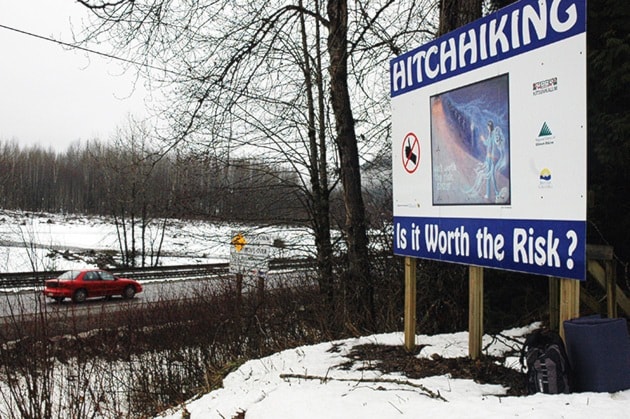Any plan to increase transit services connecting northwestern communities must ensure it is affordable for users, says Skeena NDP MLA Robin Austin.
“That’s really No. 1,” said Austin in commenting on the provincial government’s commitment made last year to spend $3 million over the next three years to better connect communities along Hwy16.
Of that amount, up to $1.6 million is to be spent over two years to either increase service on existing routes or on new ones.
That could mean, for example, more service along an existing BC Transit route connecting Kitamaat Village/Kitimat with Terrace or on new routes connecting Terrace with points east.
The key to success, however, is ensuring there’s a level of subsidy that makes expanded or new services affordable, said Austin.
And that would follow along what already exists on the Lower Mainland and in other more populated areas, he said.
“Just because there’s a low population here doesn’t mean people are entitled to the same rights as elsewhere,” said Austin.
That $1.6 million for more transit represents two-thirds of the operating costs of the increased service and 100 per cent of the capital costs of buses.
Overall, Austin was relatively satisfied with the broad provincial plan which includes establishing community transportation services and driver education programs in smaller First Nations communities, more webcams on highways and transit shelters and broadening the use of existing services such as the Northern Health Authority’s medical bus service to other passenger classifications.
“This is going in the right direction but it’s something communities have been asking for since 2006,” he noted.
The call for better transportation connections along Hwy16 began growing in response to the number of missing and murdered women along the route and the need to provide alternatives to high risk activities such as hitchhiking.
In terms of specifics, Austin did wonder about the $500,000 to be spent on more highway webcams and transit shelters.
“If you’re going to have a shelter, then you better have a bus coming by,” he said.
As for webcams, transportation ministry officials say using new technology will increase the frequency of each webcam to take still photos of vehicles and that police forces will be able to use the images as part of any ongoing investigation.
Currently, webcams take photos every 15 minutes.
Webcams will also be installed at common places where hitchhikers congregate.
Austin was emphatic that the Nisga’a of the Nass Valley must be included in any expansion of community transportation services.
They were excluded from a key November 2015 provincially-sponsored session held in Smithers to go over transportation options.
That’s because only communities within 75km either north or south of the Hwy16 corridor were invited to the session, something set out by the First Nations Health Authority which was a co-sponsor of the session.
But “that does not mean we will exclude certain communities from participating in the community vehicle funding program,” said a ministry follow up clarification.
Austin pointed out that the Nisga’a villages in the Nass already have community buses which do provided limited service to Terrace.
“They already have the physical buses so what they would need is extra money for operating expenses to maintain the buses and for the cost of driving,” he said.
But just as is the case with transit expansion, community-based service will have to be cost-shared as well.
It means the province will pay for 70 per cent of any new vehicle to a maximum of $70,000 and 70 per cent of the operating costs of any service to a maximum of $20,000 per year for the next three years.
A 10-person advisory group meant to guide the province along in deciding who should get money and what services should be established meets for the first time this month in Prince George. It is mostly made up of northern residents but its chair is a senior transportation ministry official.
